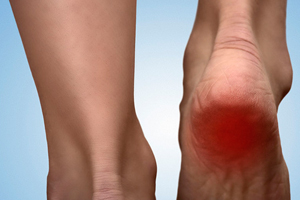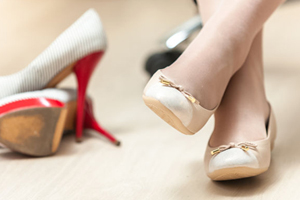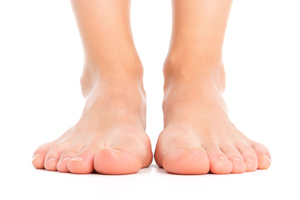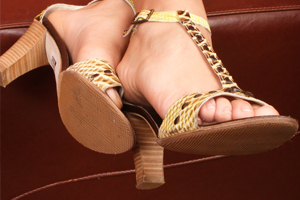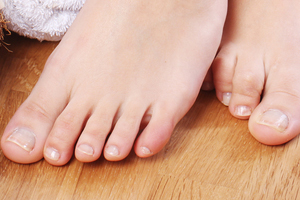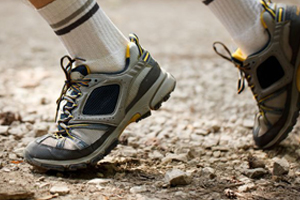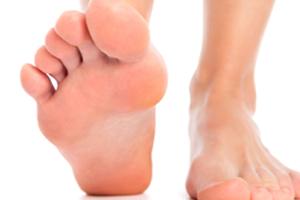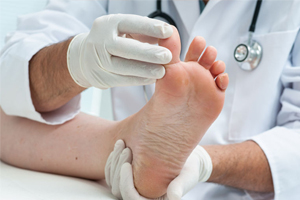
Definition:
Athlete’s foot (tinea pedis) is caused by several types of fungal organisms. It is quite common and usually easily treated. Two approaches, changing socks and shoes frequently and administering local medications, usually resolve infection.
Symptoms:
Most people have an itching sensation as well as cracking, peeling or scaly skin. Athlete’s foot commonly presents in the space between the toes. It can be more widespread and even cause severe blistering.
Causes:
Athlete’s foot is caused by fungi that thrive in moist and warm environments such showers and under socks that have been left in shoes. Skin is the body’s natural barrier, and any break in the skin can allow an infection to set in.
Anatomy:
The feet are most frequently affected because they are commonly covered by socks and shoes. This traps sweat against the skin and creates an environment where fungi thrive.
Diagnosis:
Diagnosis is typically made based on history, symptoms and visual exam. Scrapings of the involved area may be needed, and these scraping can be examined under a microscope to see if fungi are present.
Treatment:
The treatment of athlete’s foot is non-surgical. Skin moisture can be decreased with periodic sock changes throughout the day. Shoes should be rotated; don’t wear the same shoes two days in a row. Allow time for the feet to be exposed without any covering. After a shower, thoroughly dry the space between the toes. Feet may continue to sweat after a hot shower, so it’s best to wait until they have cooled before putting on socks. These interventions are as important as treatment with a medication.
Anti-fungal agents are readily available over the counter and are marketed for athlete’s foot. These typically contain clotrimazole, miconazole or tolnaftate. Sprays, powders and creams can be utilized with success. Use the medication for several weeks after symptoms have resolved to decrease the risk that the infection will return.
Recovery:
The infection will typically resolve several weeks after therapy is started, especially if hygiene practices are followed. Most infections are successfully cured. However, longer-term medication may be required for persistent infection.
Potential Complications:
Athlete’s foot can be present at the same time as other fungal infections. These can include jock itch, ringworm or toenail fungus. The involved area also can become infected with bacteria in addition to fungus. This should be considered if the foot becomes red or swollen or if you have increasing pain or drainage. In such cases, seek medical attention immediately.
Prevention:
Athlete’s foot cannot always be prevented. In general, keeping your feet as dry as possible through frequent sock changes, rotating shoes, and thoroughly drying after a shower will decrease your risk of infection.
Yorktown Footcare Group
(914) 245-7888
2050 Saw Mill River Road
Yorktown Heights, NY 10598


